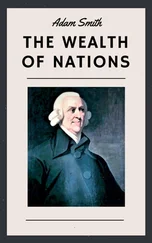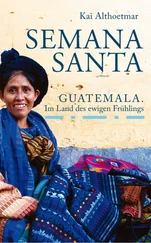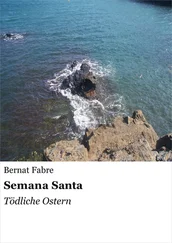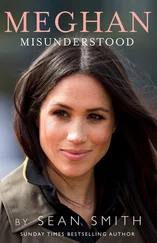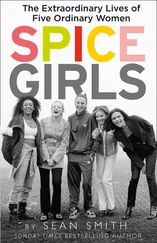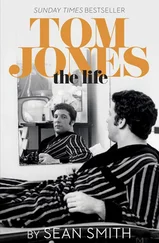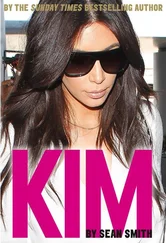The cream-tea atmosphere of the present hardly matches the town’s colourful and somewhat violent past. Framlingham Castle was the seat of the earls and dukes of Norfolk until it passed to Henry VIII’s daughter Mary – ‘Bloody Mary’, as she was known. This was where she gathered her troops before she was proclaimed Queen of England and marched to London to take her throne in the summer of 1553.
The castle was a short walk from the new family home, a spacious detached house, which they bought for the relatively bargain price of £125,000. Today it would cost you £600,000. Ed had his own bedroom and a new piano was installed downstairs in one of the reception rooms at the back, which was perfect for entertaining.
In pride of place amid all the artwork the Sheerans continued to acquire, there were framed photographs of the two boys meeting the Prince of Wales. The family’s association with Prince Charles represented the pinnacle to date of John Sheeran’s career as a curator of prestigious exhibitions. He was appointed to organise and co-ordinate the prince’s fiftieth-birthday exhibition, in 1998. Entitled ‘Travels with the Prince’, it celebrated his work as a watercolourist. It included paintings by contemporary artists such as Emma Sergeant, Derek Hill and Susannah Fiennes, cousin of the Oscar-winning actor Ralph Fiennes. The artists had been specially chosen to accompany Charles on his tours abroad.
The exhibition at the Cartoon Gallery in Hampton Court Palace, in Surrey, proved a big success. With little fuss, Prince Charles has become one of the UK’s most successful artists, whose paintings have raised millions for the Prince of Wales Charitable Foundation. The deal for the travelling artists was that their trip was paid for, the prince had first choice of their paintings and, subsequently, they were free to sell their own work. It was a formula that worked exceptionally well.
Sheeran Lock produced a sumptuous book to accompany the exhibition, in which Imogen wrote the preface and John the text. It was part of a golden period for the couple as John’s star continued to rise. In 2003, he was commissioned by the then President of Nigeria, Olusegun Obasanjo, to curate a special show of present-day Nigerian art in Abuja where the Commonwealth heads of government were meeting. The exhibition included a ground-breaking art-education project for young people from all regions of Nigeria. John and Imogen were inspired by that success to devise other programmes to help disadvantaged young people in the UK. Their philosophy was simple – nobody should be excluded from appreciating art and participating in it.
Ed was shielded from hardship in Framlingham and settled in well to life at a gentle Suffolk pace. The family had a more lively time on their frequent trips to Ireland to visit John’s parents in County Wexford. John is one of eight children – five boys and three girls including his twin sister, Mary Anne – which meant Ed had cousins all over the country. The Sheerans are a large close-knit clan: Ed has always been aware of the importance of family, and has often sung about it. Despite John being born in South London, the Sheerans were very much an Irish clan so Ireland and its music have had a profound influence on Ed’s life.
Ed’s grandfather, Bill Sheeran, was born in Magera, a small town in Londonderry, Northern Ireland. He grew up in the East End of London after his father, James, became a local doctor in Bow. James, who was Ed’s great-grandfather, was reputedly a decent boxer and family legend has it that he once fought the great heavyweight champion Jack Johnson in an exhibition bout in 1913. After a spell of bullying at school when Bill was spotted carrying his violin case, his father had enrolled him in a boxing club and taken him to local tournaments, which had led to a lifelong love of the sport. In a similar way, Ed’s love of music was enhanced by joining his own father for evenings out at pop concerts.
During the Second World War, Bill Sheeran boxed for his school, Epsom College, then trained as a dentist at Guy’s Hospital in Southwark. He continued his love affair with the noble art and became captain of the hospital’s boxing club, where he was trained by Matt Wells, a former world welterweight champion. One of Bill’s favourite jokes was that the hospital’s motto, Dare Quam Accipere , was perfect for boxers. More familiarly translated, this means, ‘[It is better] to give than to receive.’
While studying at Guy’s, Bill took on his most infamous bout – against Charlie Kray, the elder brother of the notorious gangsters, Ronnie and Reggie. Expert opinion gave Bill no chance. Walter Bartleman, boxing correspondent of the old London evening paper the Star , and later the Evening Standard , told him before the fight, ‘He’ll eat you.’ It didn’t work out like that: Bill won the bout on a stoppage when Charlie was unable to continue.
Bill met his future wife Anne Mulligan at Guy’s where she worked as a nurse. She had been raised on a farm near Gorey, a small town in County Wexford, about sixty miles south of Dublin. Ed romanticised their story on his ÷ album. The track ‘Nancy Mulligan’, a traditional Irish jig, describes how theirs was a Romeo and Juliet story. In Ed’s tribute to his grandparents, he highlights the religious divide between a Protestant boy from Northern Ireland and a Catholic girl from the Republic. Her father, according to the song, did not approve of their marriage. He relates their love affair from Bill’s point of view and would later explain, ‘They got married and no one turned up to the wedding. He melted all his gold teeth in his dental surgery and turned them into a wedding ring.’
Exactly how much of the story is true and how much is artistic licence is a guessing game that fans can play with the majority of Ed’s songs. He takes a genuine fact or feeling as a starting point and develops it into a song that resonates with every listener. Everyone has their own stories of love and can relate to the observation that Bill had never seen ‘such beauty before’ when he met his future wife. Fortunately the song met with a thumbs-up from his gran, although she was very modest about it: ‘Oh, it’s fine as long as I’m not there while he’s playing it!’
In real life, Bill and Anne married in 1951 and settled in South Norwood, an area of London south of the River Thames, which seems slightly less glamorous than the ‘Wexford border’ Ed sings about.
Bill’s second love – after his family – remained boxing while he built a thriving dental practice. When his own boxing days had passed, he became more involved in the administration of the sport as a respected steward. A popular figure, he was in charge of many of the biggest nights in British boxing and was on good terms with the sport’s then best-known names, including Muhammad Ali, Henry Cooper and, Ireland’s finest, Barry McGuigan.
While boxing might seem an unlikely bedfellow for the artistic world so enjoyed by his son John, Bill had a passion for collecting art connected to the sport. When the family moved to the quieter waters of Chislehurst in Kent, he filled the house with paintings, drawings, ceramics, sculpture and silver.
In his affectionate tribute to his father after his death at eighty-six in December 2013, John recalled how, in later years, Bill had given away most of his collection to friends. Touchingly, he gave the World Light Heavyweight Championship belt and trophy, won by Freddie Mills, back to the boxer’s widow, Chrissie.
Two years before Ed was born, his Irish grandparents retired to the same farmhouse where Anne had been born in County Wexford. In ‘Nancy Mulligan’, they have twenty-two grandchildren. By the time of Bill’s death that number had risen to twenty-three and there were also four great-grandchildren, a number that Ed has often said he is looking forward to increasing.
Читать дальше


